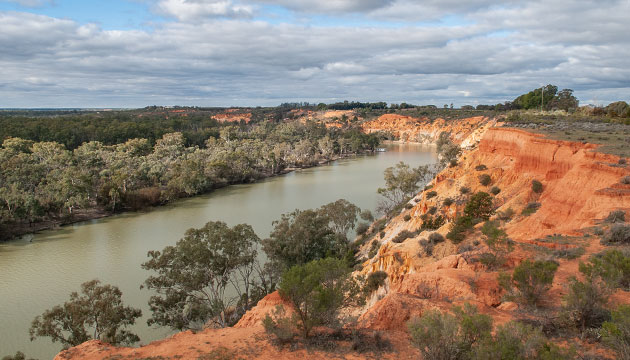Conflicting opinions and hopes surrounding the future of the vast Murray–Darling Basin are playing out against a background of severe drought and a controversial management plan.
Story Paul Myers
Such are the complexities and depth of feeling over water in Australia’s food and fibre bowl that rarely a day passes without a new report, controversy, accusation or suggested solution to the greatest dilemma the basin has known since European settlement: finding an acceptable balance between the needs of agriculture, the environment, country towns, Indigenous communities, politics and a poorly informed public over water sharing.
That quest has become more elusive as the halfway point looms in the 12-year lifespan of the Murray–Darling Basin (MDB) Plan. It has been thwarted by one of the worst droughts in modern history and, after spending $8 billion of taxpayers’ money, with a further $5 billion budgeted by 2024, no-one seems happy.
In May, a group of nine irrigators in the southern Riverina lodged a class action in the Supreme Court of New South Wales against the Murray Darling Basin Authority (MDBA) blaming it for financial losses of $750 million.
If nothing else, the plan’s first six years have shown the basin’s water inflows often aren’t enough to provide sufficient water for all interests, especially the often-stated pursuit of “healthy rivers”. A mass fish kill on the lower Darling River in January 2019 was widely regarded as evidence the plan is failing. This largely natural phenomenon brought widespread criticism of the plan (especially from South Australia), the MDBA, NSW Water and northern basin cotton growers.
Drought had dried up northern rivers and rendered Menindee Lakes effectively empty. But such is the doubt and mistrust that vested interests play the blame-game to justify their positions, with the basin’s 9200 mainly farm businesses that use irrigation often on the receiving end.
One of the most critical issues is how much water flows from the basin’s northern rivers into the Barwon–Darling system, Menindee Lakes, the Murray and lower lakes in South Australia, and how much of that is lost through natural means. New South Wales and Victoria are obligated to ensure South Australia receives 1850 gigalitres a year. (A gigalitre is a billion litres, or 1000 megalitres.)
The NSW Irrigators’ Council says that in 2016–17 – a relatively big rainfall year – 7800GL of inflows were received in the northern basin, which filled Menindee Lakes, but 55% of that was subsequently lost to evaporation. The following year, inflows fell to just 542GL, among the lowest on record, and, in the first half of 2018–19, were a meagre 30GL. The council says that in the past 10 years less than 30% of 35,000GL inflows into the northern basin was used for irrigation.
“We’re considered criminals because we use water,” says cotton grower Andrew Watson. “But we grow cotton because it’s the most water-efficient crop, with a gross margin of $400–$600 a megalitre – double durum wheat. It’s great in rotation with wheat, sorghum and canola, and the most appropriate crop in this region. If there was a market for hemp, we’d grow it, too.”
There is a widespread view that cotton is a repugnant, thirsty crop for which farmers illegally and unnecessarily extract and horde water, causing the demise of the Murray–Darling Basin’s river systems. Politicians and environmentalists frequently echo this view as they and the broader community seek solutions for the basin’s water woes.
Last year, media coverage showed farmers in the north of the basin allegedly illegally pumping water during an embargo, pumping without correctly operating meters and building unapproved levees to hold water. Prosecutions and court cases followed, and one farmer pleaded guilty. However, the coverage created an impression of widespread water theft, rorting of the system and inadequate policing. It has provided fodder for politicians such as Greens Senator Sarah Hanson-Young, who wants cotton farmers banned from extracting water from the Murray–Darling Basin, and Centre Alliance Senator Rex Patrick, who argues cotton exports should be banned.
Although northern basin cotton growers have received virtually no general security water allocations for two years, the outrage continues.
This story excerpt is from Issue #125
Outback Magazine: June/July 2019










